The Bleached Bones of the Dead
Slave ships were floating laboratories, offering researchers a chance to examine the course of diseases in fairly controlled, quarantined environments.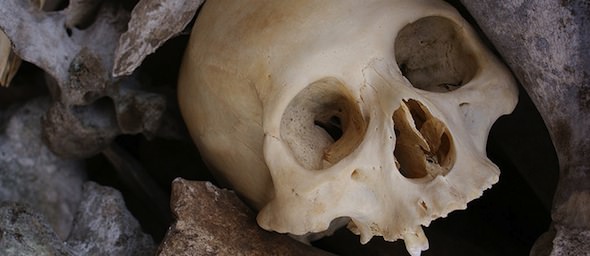
By Greg Grandin, TomDispatchThis piece first appeared at TomDispatch. Read Adam Hochschild’s introduction here.
Many in the United States were outraged by the remarks of conservative evangelical preacher Pat Robertson, who blamed Haiti’s catastrophic 2010 earthquake on Haitians for selling their souls to Satan. Bodies were still being pulled from the rubble — as many as 300,000 died — when Robertson went on TV and gave his viewing audience a little history lesson: the Haitians had been “under the heel of the French” but they “got together and swore a pact to the devil. They said, ‘We will serve you if you will get us free from the French.’ True story. And so, the devil said, ‘OK, it’s a deal.'”
A supremely callous example of right-wing idiocy? Absolutely. Yet in his own kooky way, Robertson was also onto something. Haitians did, in fact, swear a pact with the devil for their freedom. Only Beelzebub arrived smelling not of sulfur, but of Parisian cologne.
Haitian slaves began to throw off the “heel of the French” in 1791, when they rose up and, after bitter years of fighting, eventually declared themselves free. Their French masters, however, refused to accept Haitian independence. The island, after all, had been an extremely profitable sugar producer, and so Paris offered Haiti a choice: compensate slave owners for lost property — their slaves (that is, themselves) — or face its imperial wrath. The fledgling nation was forced to finance this payout with usurious loans from French banks. As late as 1940, 80% of the government budget was still going to service this debt.
In the on-again, off-again debate that has taken place in the United States over the years about paying reparations for slavery, opponents of the idea insist that there is no precedent for such a proposal. But there is. It’s just that what was being paid was reparations-in-reverse, which has a venerable pedigree. After the War of 1812 between Great Britain and the U.S., London reimbursed southern planters more than a million dollars for having encouraged their slaves to run away in wartime. Within the United Kingdom, the British government also paid a small fortune to British slave owners, including the ancestors of Britain’s current Prime Minister, David Cameron, to compensate for abolition (which Adam Hochschild calculated in his 2005 book Bury the Chains to be “an amount equal to roughly 40% of the national budget then, and to about $2.2 billion today”).
Advocates of reparations — made to the descendants of enslaved peoples, not to their owners — tend to calculate the amount due based on the negative impact of slavery. They want to redress either unpaid wages during the slave period or injustices that took place after formal abolition (including debt servitude and exclusion from the benefits extended to the white working class by the New Deal). According to one estimate, for instance, 222,505,049 hours of forced labor were performed by slaves between 1619 and 1865, when slavery was ended. Compounded at interest and calculated in today’s currency, this adds up to trillions of dollars.
But back pay is, in reality, the least of it. The modern world owes its very existence to slavery.
Voyage of the Blind
Consider, for example, the way the advancement of medical knowledge was paid for with the lives of slaves.
The death rate on the trans-Atlantic voyage to the New World was staggeringly high. Slave ships, however, were more than floating tombs. They were floating laboratories, offering researchers a chance to examine the course of diseases in fairly controlled, quarantined environments. Doctors and medical researchers could take advantage of high mortality rates to identify a bewildering number of symptoms, classify them into diseases, and hypothesize about their causes.
Corps of doctors tended to slave ports up and down the Atlantic seaboard. Some of them were committed to relieving suffering; others were simply looking for ways to make the slave system more profitable. In either case, they identified types of fevers, learned how to decrease mortality and increase fertility, experimented with how much water was needed for optimum numbers of slaves to survive on a diet of salted fish and beef jerky, and identified the best ratio of caloric intake to labor hours. Priceless epidemiological information on a range of diseases — malaria, smallpox, yellow fever, dysentery, typhoid, cholera, and so on — was gleaned from the bodies of the dying and the dead.
When slaves couldn’t be kept alive, their autopsied bodies still provided useful information. Of course, as the writer Harriet Washington has demonstrated in her stunning Medical Apartheid, such experimentation continued long after slavery ended: in the 1940s, one doctor said that the “future of the Negro lies more in the research laboratory than in the schools.” As late as the 1960s, another researcher, reminiscing in a speech given at Tulane Medical School, said that it was “cheaper to use Niggers than cats because they were everywhere and cheap experimental animals.”
Medical knowledge slowly filtered out of the slave industry into broader communities, since slavers made no proprietary claims on the techniques or data that came from treating their slaves. For instance, an epidemic of blindness that broke out in 1819 on the French slaver Rôdeur, which had sailed from Bonny Island in the Niger Delta with about 72 slaves on board, helped eye doctors identify the causes, patterns, and symptoms of what is today known as trachoma.
The disease first appeared on the Rôdeur not long after it set sail, initially in the hold among the slaves and then on deck. In the end, it blinded all the voyagers except one member of the crew. According to a passenger’s account, sightless sailors worked under the direction of that single man “like machines” tied to the captain with a thick rope. “We were blind — stone blind, drifting like a wreck upon the ocean,” he recalled. Some of the sailors went mad and tried to drink themselves to death. Others retired to their hammocks, immobilized. Each “lived in a little dark world of his own, peopled by shadows and phantasms. We did not see the ship, nor the heavens, nor the sea, nor the faces of our comrades.”
But they could still hear the cries of the blinded slaves in the hold.
This went on for 10 days, through storms and calms, until the voyagers heard the sound of another ship. The Spanish slaver San León had drifted alongside the Rôdeur. But the entire crew and all the slaves of that ship, too, had been blinded. When the sailors of each vessel realized this “horrible coincidence,” they fell into a silence “like that of death.” Eventually, the San León drifted away and was never heard from again.
The Rôdeur’s one seeing mate managed to pilot the ship to Guadeloupe, an island in the Caribbean. By now, a few of the crew, including the captain, had regained some of their vision. But 39 of the Africans hadn’t. So before entering the harbor the captain decided to drown them, tying weights to their legs and throwing them overboard. The ship was insured and their loss would be covered: the practice of insuring slaves and slave ships meant that slavers weighed the benefits of a dead slave versus living labor and acted accordingly.
Events on the Rôdeur caught the attention of Sébastien Guillié, chief of medicine at Paris’s Royal Institute for Blind Youth. He wrote up his findings — which included a discussion of the disease’s symptoms, the manner in which it spread, and best treatment options — and published them in Bibliothèque Ophtalmologique, which was then cited in other medical journals as well as in an 1846 U.S. textbook, A Manual of the Diseases of the Eye.
Slaves spurred forward medicine in other ways, too. Africans, for instance, were the primary victims of smallpox in the New World and were also indispensable to its eradication. In the early 1800s, Spain ordered that all its American subjects be vaccinated against the disease, but didn’t provide enough money to carry out such an ambitious campaign. So doctors turned to the one institution that already reached across the far-flung Spanish Empire: slavery. They transported the live smallpox vaccine in the arms of Africans being moved along slave routes as cargo from one city to another to be sold: doctors chose one slave from a consignment, made a small incision in his or her arm, and inserted the vaccine (a mixture of lymph and pus containing the cowpox virus). A few days after the slaves set out on their journey, pustules would appear in the arm where the incision had been made, providing the material to perform the procedure on yet another slave in the lot — and then another and another until the consignment reached its destination. Thus the smallpox vaccine was disseminated through Spanish America, saving countless lives.
Slavery’s Great Schism
In 1945, Allied troops marched into the first of the Nazi death camps. What they saw inside, many have remarked, forced a radical break in the West’s moral imagination. The Nazi genocide of Jews, one scholar has written, is history’s “black hole,” swallowing up all the theological, ethical, and philosophical certainties that had earlier existed.
Yet before there was the Holocaust, there was slavery, an institution that also transformed the West’s collective consciousness, as I’ve tried to show in my new book, The Empire of Necessity: Slavery, Freedom, and Deception in the New World.
Take, for example, the case of the Joaquín, a Portuguese frigate that left Mozambique in late 1803 with 301 enslaved East Africans. Nearly six months later, when a port surgeon opened the ship’s hatch in Montevideo, Uruguay, he was sickened by what he saw: only 31 bone-thin survivors in a foul, bare room, otherwise empty save for hundreds of unused shackles.
City officials convened a commission of inquiry to explain the deaths of the other 270 slaves, calling on the expertise of five surgeons — two British doctors, a Spaniard, a Swiss Italian, and one from the United States. The doctors testified that before boarding the Joaquín, the captives would have felt extreme anguish, having already been forced to survive on roots and bugs until arriving on the African coast emaciated and with their stomachs distended. Then, once on the ocean, crowded into a dark hold with no ventilation, they would have had nothing to do other than listen to the cries of their companions and the clanking of their chains. Many would have gone mad trying to make sense of their situation, trying to ponder “the imponderable.” The surgeons decided that the East Africans had died from dehydration and chronic diarrhea, aggravated by the physical and psychological hardships of slavery — from, that is, what they called “nostalgia,” “melancholia,” and “cisma,” a Spanish word that loosely means brooding or mourning.
The collective opinion of the five surgeons — who represented the state of medical knowledge in the U.S., Great Britain, and Spain — reveals the way slavery helped in what might be called the disenchanting of medicine. In it you can see how doctors dealing with the slave trade began taking concepts like melancholia out of the hands of priests, poets, and philosophers and giving them actual medical meaning.
Prior to the arrival of the Joaquín in Montevideo, for instance, the Royal Spanish Academy was still associating melancholia with actual nighttime demon possession. Cisma literally meant schism, a theological concept Spaniards used to refer to the spiritual split personality of fallen man. The doctors investigating the Joaquín, however, used these concepts in a decidedly secular, matter-of-fact manner and in ways that unmistakably affirmed the humanity of slaves. To diagnose enslaved Africans as suffering from nostalgia and melancholia was to acknowledge that they had selves that could be lost, inner lives that could suffer schism or alienation, and pasts over which they could mourn.
Two decades after the incident involving the Joaquín, the Spanish medical profession no longer thought melancholia to be caused by an incubus, but considered it a type of delirium, often related to seasickness. Medical dictionaries would later describe the condition in terms similar to those used by critics of the Middle Passage — as caused by rancid food, too close contact, extreme weather, and above all the “isolation” and “uniform and monotonous life” one experiences at sea. As to nostalgia, one Spanish dictionary came to define it as “a violent desire compelling those taken out of their country to return home.”
It was as if each time a doctor threw back a slave hatch to reveal the human-made horrors below, it became a little bit more difficult to blame mental illness on demons.
In the case of the Joaquín, however, the doctors didn’t extend the logic of their own reasoning to the slave trade and condemn it. Instead, they focused on the hardships of the Middle Passage as a technical concern. “It is in the interests of commerce and humanity,” said the Connecticut-born, Edinburgh-educated John Redhead, “to get slaves off their ships as soon as possible.”
Follow the Money
Slavery transformed other fields of knowledge as well. For instance, centuries of buying and selling human beings, of shipping them across oceans and continents, of defending, excoriating, or trying reform the practice, revolutionized both Christianity and secular law, giving rise to what we think of as modern human rights law.
In the realm of economics, the importance of slaves went well beyond the wealth generated from their uncompensated labor. Slavery was the flywheel on which America’s market revolution turned — not just in the United States, but in all of the Americas.
Starting in the 1770s, Spain began to deregulate the slave trade, hoping to establish what merchants, not mincing any words, called a “free trade in blacks.” Decades before slavery exploded in the United States (following the War of 1812 with Great Britain), the slave population increased dramatically in Spanish America. Enslaved Africans and African Americans slaughtered cattle and sheared wool on the pampas of Argentina, spun cotton and wove clothing in textile workshops in Mexico City, and planted coffee in the mountains outside Bogotá. They fermented grapes for wine at the foot of the Andes and boiled Peruvian sugar to make candy. In Guayaquil, Ecuador, enslaved shipwrights built cargo vessels that were used for carrying more slaves from Africa to Montevideo. Throughout the thriving cities of mainland Spanish America, slaves worked, often for wages, as laborers, bakers, brick makers, liverymen, cobblers, carpenters, tanners, smiths, rag pickers, cooks, and servants.
It wasn’t just their labor that spurred the commercialization of society. The driving of more and more slaves inland and across the continent, the opening up of new slave routes and the expansion of old ones, tied hinterland markets together and created local circuits of finance and trade. Enslaved peoples were investments (purchased and then rented out as laborers), credit (used to secure loans), property, commodities, and capital, making them an odd mix of abstract and concrete value. Collateral for loans and items for speculation, slaves were also objects of nostalgia, mementos of a fading aristocratic world even as they served as the coin for the creation of a new commercialized one.
Slaves literally made money: working in Lima’s mint, they trampled quicksilver into ore with their bare feet, pressing toxic mercury into their bloodstream in order to amalgamate the silver used for coins. And they were money — at least in a way. It wasn’t that the value of individual slaves was standardized in relation to currency, but that slaves were quite literally the standard. When appraisers calculated the value of any given hacienda, or estate, slaves usually accounted for over half of its worth; they were, that is, much more valuable than inanimate capital goods like tools and millworks.
In the United States, scholars have demonstrated that profit wasn’t made just from southerners selling the cotton that slaves picked or the cane they cut. Slavery was central to the establishment of the industries that today dominate the U.S. economy: finance, insurance, and real estate. And historian Caitlan Rosenthal has shown how Caribbean slave plantations helped pioneer “accounting and management tools, including depreciation and standardized efficiency metrics, to manage their land and their slaves” — techniques that were then used in northern factories.
Slavery, as the historian Lorenzo Green argued half a century ago, “formed the very basis of the economic life of New England: about it revolved, and on it depended, most of her other industries.” Fathers grew wealthy building slave ships or selling fish, clothing, and shoes to slave islands in the Caribbean; when they died, they left their money to sons who “built factories, chartered banks, incorporated canal and railroad enterprises, invested in government securities, and speculated in new financial instruments.” In due course, they donated to build libraries, lecture halls, botanical gardens, and universities, as Craig Steven Wilder has revealed in his new book, Ebony and Ivy.
In Great Britain, historians have demonstrated how the “reparations” paid to slave-owning families “fuelled industry and the development of merchant banks and marine insurance, and how it was used to build country houses and to amass art collections.”
Follow the money, as the saying goes, and you don’t even have to move very far along the financial trail to begin to see the wealth and knowledge amassed through slavery. To this day, it remains all around us, in our museums, courts, places of learning and worship, and doctors’ offices. Even the tony clothier, Brooks Brothers (founded in New York in 1818), got its start selling coarse slave clothing to southern plantations. It now describes itself as an “institution that has shaped the American style of dress.”
Fever Dreams and the Bleached Bones of the Dead
In the United States, the reparations debate faded away with the 2008 election of Barack Obama — except as an idea that continues to haunt the fever dreams of the right-wing imagination. A significant part of the backlash against the president is driven by the fantasy that he is presiding over a radical redistribution of wealth — think of all those free cell phones that the Drudge Report says he’s handing out to African Americans! — part of a stealth plan to carry out reparations by any means possible.
“What they don’t know,” said Rush Limbaugh shortly after Obama’s inauguration, “is that Obama’s entire economic program is reparations.” The conservative National Legal Policy Center recently raised the specter of “slavery reparations courts” — Black Jacobin tribunals presided over by the likes of Jessie Jackson, Louis Farrakhan, Al Sharpton, and Russell Simmons and empowered to levy a $50,000 tax on every white “man, woman, and child in this country.” It’s time to rescue the discussion of reparations from the swamp of talk radio and the comment sections of the conservative blogosphere.
The idea that slavery made the modern world is not new, though it seems that every generation has to rediscover that truth anew. Almost a century ago, in 1915, W.E.B Du Bois wrote, “Raphael painted, Luther preached, Corneille wrote, and Milton sung; and through it all, for four hundred years, the dark captives wound to the sea amid the bleaching bones of the dead; for four hundred years the sharks followed the scurrying ships; for four hundred years America was strewn with the living and dying millions of a transplanted race; for four hundred years Ethiopia stretched forth her hands unto God.”
How would we calculate the value of what we today would call the intellectual property — in medicine and other fields — generated by slavery’s suffering? I’m not sure. But a revival of efforts to do so would be a step toward reckoning with slavery’s true legacy: our modern world.
TomDispatch regular Greg Grandin’s new book, The Empire of Necessity: Slavery, Freedom, and Deception in the New World, has just been published.
Follow TomDispatch on Twitter and join us on Facebook and Tumblr. Check out the newest Dispatch Book, Ann Jones’s They Were Soldiers: How the Wounded Return From America’s Wars — The Untold Story.
Copyright 2014 Greg Grandin
Your support matters…Independent journalism is under threat and overshadowed by heavily funded mainstream media.
You can help level the playing field. Become a member.
Your tax-deductible contribution keeps us digging beneath the headlines to give you thought-provoking, investigative reporting and analysis that unearths what's really happening- without compromise.
Give today to support our courageous, independent journalists.
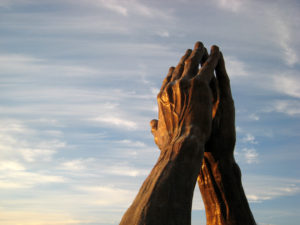
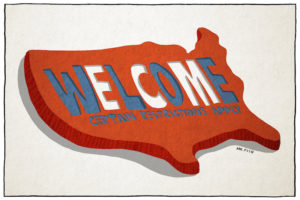
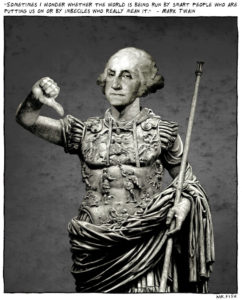
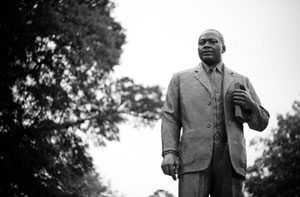
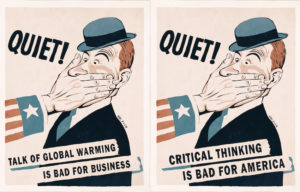
You need to be a supporter to comment.
There are currently no responses to this article.
Be the first to respond.